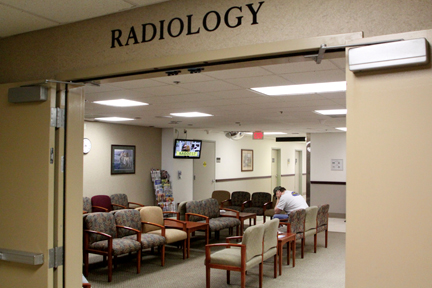
Better care coordination among providers and service lines results in optimum management of population health.
A large multi-campus health system based in Des Moines, Iowa, UnityPoint Health serves patients across Iowa, Illinois and Wisconsin. In recent years, the system has grown rapidly and so has the need for IT support and storage — particularly in the area of radiology. As more community network hospitals joined, the imaging systems were facing a continuing cycle of hardware replacement and upgrades. To meet the challenges of providing more efficient healthcare while keeping costs down, UnityPoint is moving to a completely virtual server environment. In this interview Matthew Bishop, enterprise solutions architect, explains what they are trying to achieve and how healthcare IT is helping them overcome challenges and reach their goals.
Q: What were the main factors driving UnityPoint’s move to virtualization of its server and application environment?
A: Instead of continuing to purchase more servers and expanding our data center, we decided the time was right for a completely virtual server environment. This project was made more urgent by our hardware replacement cycle. We had passed the four-year life span of the equipment and were faced with the prospect of replacing not just the 12 servers in our main center, but also the mirrored system in a disaster recovery location. It was clear that the cost of maintaining the servers was considerable. In addition to replacing existing equipment, maintenance and power costs were rising.
Q: How did you go about winning support and buy-in from your stakeholders?
A: Internal communications and transparency was key and we worked closely with our PACS Governance Council. Key to consent was proving that “the big leap” would occur without any gaps in service or performance. Our stakeholders needed the assurance that the system would continue to meet the internal service level agreements they expected. After extensive analysis and planning, the process to move PACS, cardiology and other applications to remote virtual machines went smoothly.
Q: What efficiency gains do you find after conversion to a virtual environment?
A: It resulted in much less administration time devoted to correcting network errors. Radiologists and clinicians were able to access and view exams in a faster and more efficient manner. We recorded a 175 percent increase in the ability of an application server to process incoming images. Performance improved in almost every area on the test system. One of the most impressive discoveries was in the area of disaster recovery. Bringing up our mirror site required two hours with a full 45 minutes devoted to failing over applications to the servers. The application servers on our virtual disaster recovery system came up in less than three minutes
Q: What were your next steps in this process?
A: With this experience, we started to virtualize other applications seeking the same kinds of performance benefits. These solutions included dictation voice recognition system and qualitative intelligence and communication system (QICS); our workflow and communication solution. As we upgraded to McKesson Radiology 12.0, virtualization offered us an easier path to upgraded hardware without the burden of managing a large and ever growing pool of servers. Along with our radiology solution, we moved our radiation oncology system to a virtual server. During this process we also added McKesson Clinical Reference Viewer, a browser-agnostic viewer that allows physicians to access reports and images from a variety of mobile devices.
Q: Why was it important to have a vendor neutral archive?
A: With the addition of McKesson Enterprise Image Repository we were able to achieve a vendor neutral archive that effectively met the needs of our growing affiliate health systems. It enabled us to archive, manage and deliver imaging data without allocating large amounts of resources or locking us into a specific PACS. This vendor neutral approach is vital as we continue to add other hospitals with different kinds of systems.




 December 10, 2025
December 10, 2025 









